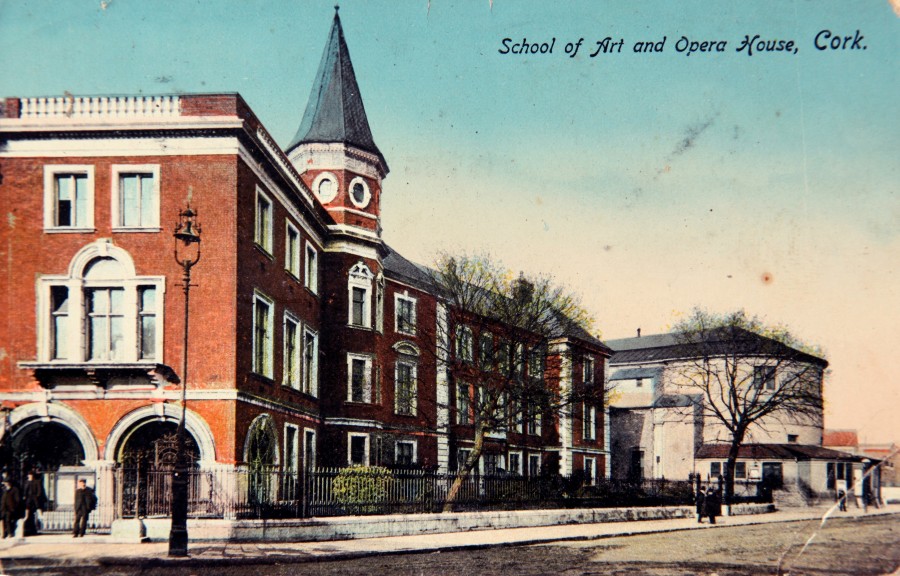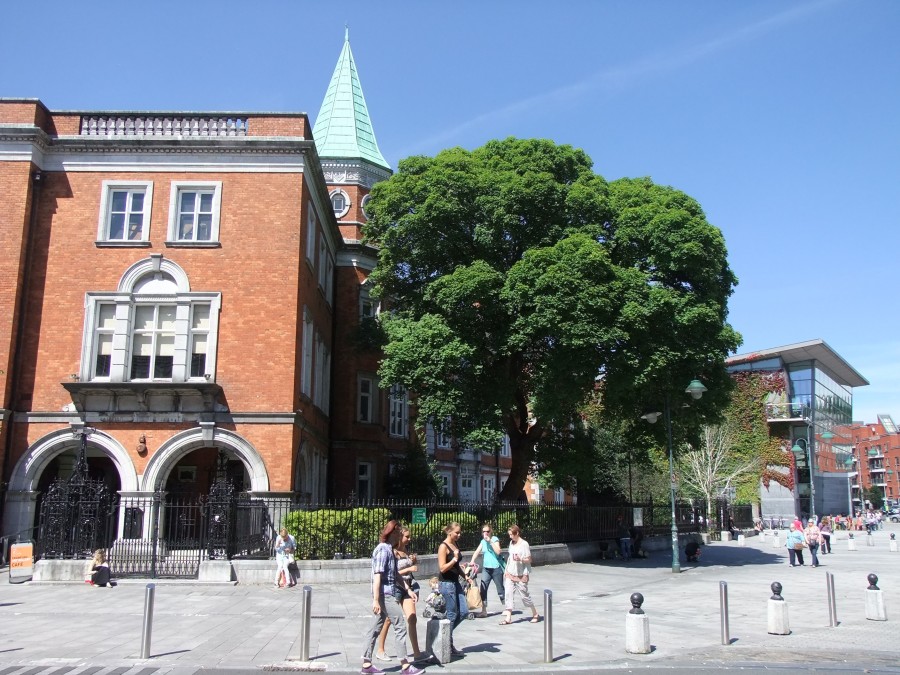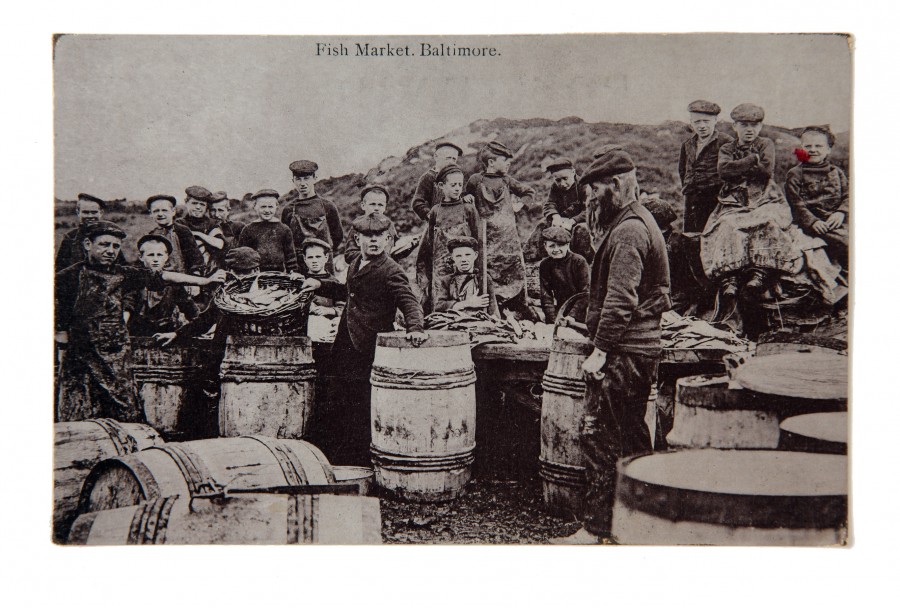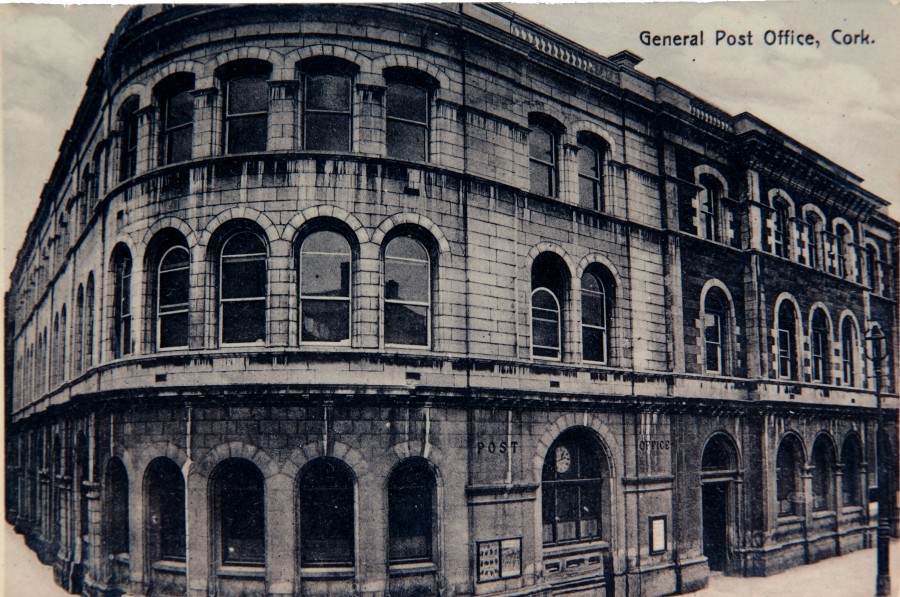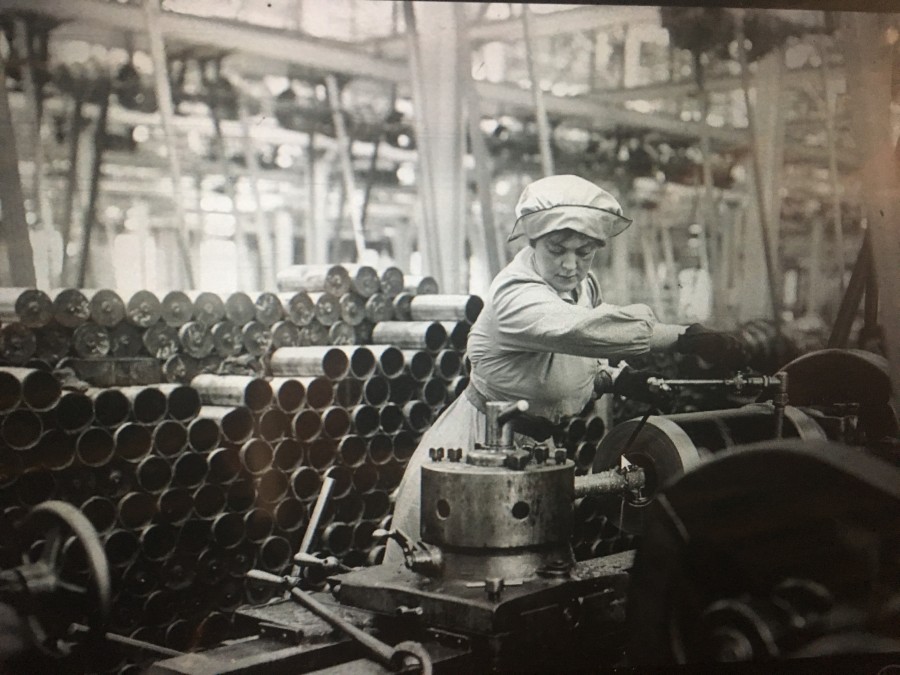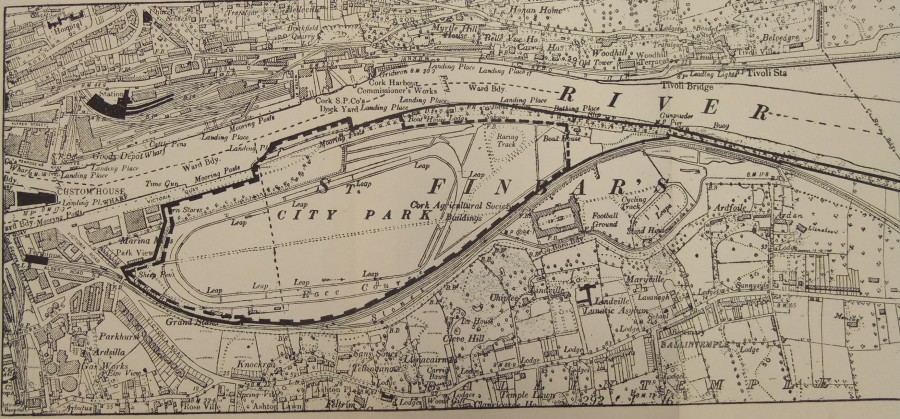
Monthly Archives: December 2016
Kieran’s Our City, Our Town, 22 December 2016
Kieran’s Our City, Our Town Article,
Cork Independent, 22 December 2016
Remembering 1916: Christmas Preparations
Today one hundred years ago, citizens went about their annual Christmas shopping amidst a sharp frost and a bitter wind. The Cork Examiner reports of the week reveal multiple tales of a city struggling with legacies of war and loss. Animated scenes were recorded at a Christmas party at Victoria Barracks on a Wednesday evening, when through the kindness of Lieutenant-Colonel A Canning, CMG, commanding the 3rd Leinsters, and Mrs Canning, an entertainment was given to the wives and children of the men of the several battalions of the regiment who were resident in Cork and vicinity. It was an anecdote to the horrors of news across other parts of the media’s press coverage. On 18 December 1916, the Battle of Verdun ended in France with German troops defeated. The Battle of Verdun lasted for 303 days and became the longest and one of the costliest battles in human history with nearly a million casualities.
The 3rd Leinsters Battalion was one of eight Irish regiments raised largely in Ireland with its home depot in Birr. The function in Cork barracks commenced at 3.30pm when tea was served in the YMCA Hut to about 600 women and children. Afterwards all proceeded to the gymnasium, which was elaborately decorated with flags and bunting. Here an enormous Christmas tree-laiden with toys in waiting, Captain HRH Ireland MC in ruddy robes and snowy hair and whiskers, acted as Santa Claus, and the toys were given away by Mrs Reed. There were almost 500 children present, and each child got a present.
Archives of the Leinster Regiment Ireland record that three battalions of the Leinster Regiment were active during the Easter Rising in 1916, it was only the 5th that was directly involved in the fighting. The 3rd and 4th battalions were mobilised but performed only guard duty at Bridges on the Shannon. The legacy of 1916 also pervaded the press in December 1916 with news from the Frongoch Internment Camp in Wales. Owing to their refusing to answer roll-call and assist in the identification of those liable to military service, prisoners at the South Camp were heavily penalised – one of the punishments being the deprivation of medical treatment when necessary.
In our recent weeks, the Digital Repository of Ireland has launched a series of new digital exhibitions to post online in the next couple of months to commemorate the internment of Irish prisoners at the Frongoch internment camp. Frongoch and 1916: Recreating a Lost Landscape will contain several thematically arranged exhibitions, augmented by unseen memorabilia from private collections digitised at public memorabilia collection days. The project blurb details that Frongoch provides a fascinating window into 1916, because the Irish prisoners, their Welsh guards and local townspeople created a kinship during this short imprisonment, leading to a fount of stories and an array of artefacts that mark the brief period of the camp’s existence. Following the 1916 Easter Rising, the camp was emptied of the German prisoners being held there from World War I battlefields, and was populated with c. 1,800 Irish prisoners, including Michael Collins. The camp was emptied in December 1916, but not before becoming known as ‘ollscoil na réabhlóide’, the “University of Revolution” for the discussions and classes that had been built by the community. In terms of the emptying of Froncoch Camp a small story appearing in the Cork Examiner on 26 December 1916 comments that on the previous Saturday and Sunday men from the County of Cork arrested after the troubles of Easter Week and confined in internment camps in England, arrived in Cork. They were met by relatives and friends at the Glanmire Railway terminus, and proceeded to their respective homes.
Where both soldier and revolutionary met was probably at the Cork Opera House. A century ago it was an old-established custom at the Cork Opera House to open the after-Christmas season with a George Edwarde’s musical comedy. The success of 1916 was “The Happy Day”, which ran for several months in London, and had been presented in British cities with equal success. It was welcomed to Cork in the afternoon of 27 December by an audience, which left very few seats vacant in the Opera House. The play, which was in two acts, was the work of Mr Seymour Hicks; the music was by Sydney Jones and Paul A Rubens, and the latter with Adrian Ross, contributed to the lyrics. As to the plot – Prince Charles of Galania, who might be a knight errant in the old days of chivalry, is to marry Princess Mary of Valaria, whom he has never seen. He meets the Princess, but thinks she is somebody else, and they arrange to meet again at a sort of Bohemian ball that forms part of the municipal celebrations. And perhaps the theme of multiple identities is where Cork and the country ended up on the last day of December 1916 – being at a crossroads of multiple narratives, all active in shaping Ireland’s southern capital – where themes of a world war, revolution, poverty, industrial opportunism through the hopeful Fords project all merge to create an Atlantic port city full of stories about life and humanity.
Happy Christmas and Happy New Year to all readers of the column – if you missed one of the columns this year, check out the Our City, Our Town index at my website, www.corkheritage.ie
Cork 1916, A Year Examined (2016) by Kieran McCarthy & Suzanne Kirwan is now available in Cork bookshops.
Cork City History Tour (2016) by Kieran McCarthy is also available in Cork bookshops.
Captions:
875a. Crawford Art Gallery & Cork Opera House, c.1916 (source: Cork City Through Time by Kieran McCarthy & Dan Breen)
875b. Present day Emmett Place (picture: Kieran McCarthy)
Cork City Local Economic Development Plan
A new plan has been launched, which sets out a blueprint for the future economic and community development of Cork City.
The 6 year plan is based on fifteen High Level Goals, which relate to issues such as housing, children and young people, older people, a safe and green city, economic diversity, social inclusion, education and learning, quality of place and others – all of which play a critical role in ensuring a good quality of life for those living and working in Cork City.
The plan is based on an extensive consultation process which commenced in 2015, involving a wide range of community & voluntary organisations, public agencies, business, social partners and other stakeholders that are active in the city. It therefore reflects the issues and priorities which have been identified locally. The LECP is a multiagency plan and will require multi agency cooperation and joint working to ensure the delivery and successful implementation of the various actions.
The Cork City LECP has been developed through two structures – the Local Community Development Committee and the Strategic Planning, Economic Development and Enterprise Strategic Policy Committee (SPC).
For further information please contact:
Pat Ledwidge, Director of Service, Strategic Planning and Economic Development, Cork City Council tel 4924034; email: pat_ledwidge@corkcity.ie
Or
Paul Moynihan, Director of Service, Corporate Affairs, Cork City Council tel 4924270 ; email: paul_moynihan@corkcity.ie
Second Tranche of Funding Announced for Blackrock Pier
Announcement has been made by Cork City Council of a grant by the National Transport Authority of e.800.000 to fulfil the second phase of redevelopment at Blackrock Village pier. This entails the creation of a stepped down plaza area into the river. Independent Cllr Kieran McCarthy noted; “this is great news for Blackrock residents and those who walk and enjoy the Marina and Blackrock area. The pier area will now be the focus of envy of other small coastal villages in Ireland. The scheme will complement the existing pier area and put the focus back even more on the important relationship between the pier and the river. It also comprises very good urban design and will create a vibrant public realm space for people to enjoy this corner of historic Cork”. Work will shortly conclude on phase one i.e. the widening of roads in the area and phase 2, the plaza area is said to begin in the early months of next year.
Kieran’s Our City, Our Town, 15 December 2016
Kieran’s Our City, Our Town Article,
Cork Independent, 15 December 2016
Remembering 1916: Railways Connecting the Region
There are some great historical narratives within Cork’s news for 1916. A number address Cork’s links to the region through its railway line infrastructure. In newspapers and archives one can read about the benefits of such lines as the Cork Bandon and South Coast Railway, the Cork Muskerry Tram and the Cork Blackrock and Passage Railway Line connecting people, animals, fisheries and place from the coast and hinterland to the city and vice-verse – igniting the region and city into one.
The Cork South Coast and Western Railway Company across one year between 1915 and 1916, as reported at their company AGM in mid February 1916, stressed the importance of their transport link. They highlighted that the total number of passengers the company carried was 503,531. This was an increase of 31,000 and in money £2,037 over the previous year. In parcels and miscellaneous traffic there was an increase of 18, 885 tons, representing £1,588 in money. Of this increase 4,134 tons was in coal and coke owing to a greater quality having been sent over the railway from Cork instead of being shipped direct to the western ports by coasting vessels.
Lime, brick, stone and slate all showed decreases. Building operations had been to a great extent suspended owing to the war. The quantity of stone required for the streets of Cork was also reduced. In barytes traffic there was an increase of 2,639 tons. Enhanced prices and the total cessation of the usual continental supply to the markets led to an increased output from the mines at Clonakilty and Bantry. Imported grain showed an increase of nearly 19,000 tons. The traffic of grain had almost doubled in the previous 12 months, and like coal, was capable of great development if additional sidings were constructed on Anderson’s Quay and on a new timber wharf at Victoria Quay.
The railway company carried 2,650 more cattle whilst in pigs there was an increase of 4,676. The fish traffic from Skibbereen, Kinsale and Bantry was at normal levels, while from Baltimore there was transported 1,645 tons of fresh mackerel and herring, showing an increase of 850 tons, over the previous year’s consignment from that port, and making a record year. The completion of the new pier there being constructed by the Congested Districts Board and by Cork County Council, made Baltimore a very important fishing station. From 1879, Baltimore had developed as a centre of an expanding mackerel fleet. Eleven steamers brought the spring mackerel to England on an almost daily basis. In 1887, the Baltimore Fishing School for the training of 150 boys in a fishing occupation was founded. In 1880, a new pier was built and in 1893, a new spur rail track from Skibbereen to Baltimore was opened to transport the fish to other markets in the city and county.
At the annual company meeting of Cork Blackrock and Passage Railway in late February 1916 serious difficulties were presented – namely the closing of Crosshaven by the military authorities on the outbreak of the war, the increased cost of coal, labour and stores, and the erection of a new pier at Queenstown. The gross revenue showed an increase of £1,419, but had they been permitted by the military authorities to carry on the usual summer and excursion traffic to Crosshaven, they would have had large additional receipts.
Crosshaven Station closed shortly after the commencement of the war. This effected trade within the village. In addition small boats with oars were used by the men of Fountainstown, Myrtleville and Fennel’s Bay. The fishing grounds were located around the harbour mouth. Those without boats waited for the mackerel to come inshore and caught them by the hundred with large pocket nets. A barrel of salted mackerel could be seen in every fisherman’s cottage in preparation for winter each year. Without the train fast transport to Cork’s markets limited trade. Tourism was also affected. Crosshaven in 1916 was a growing tourism town; it had five hotels, twelve shopkeepers, and four vintners.
The military authorities prohibited civilians from approaching the coast line between Ringabella Creek and Crosshaven village, either by day or night. All the summer residents were ordered away, but as a matter of equity they were refunded a portion of the cost of their season tickets. No persons were allowed to enter the district without military permits. All excursion traffic by train and boat was prohibited, with the result that the Crosshaven traffic was practically decimated. This state of affairs continued up to 27 June 1915, when a slight modification of the regulations was made, exempting visitors from the necessity of permits, but no excursion traffic was permitted, and as a consequence hardly anyone visited Crosshaven.
From the first day of the war the railway company had done everything in their power to assist the naval and military authorities. There was a great demand by both services, for the transport of stores to various camps within the Harbour and to Haulbowline. Finding it impossible to satisfy their requirements with the existing goods steamers, the directors purchased an additional vessel, the “Taffy” at great expense, and though able to carry all the naval and military stores offering, they were doing so without profit.
Cork 1916, A Year Examined (2016) by Kieran McCarthy & Suzanne Kirwan is now available in Cork bookshops.
Cork City History Tour (2016) by Kieran McCarthy is also available in Cork bookshops.
Captions:
874a. Baltimore fish market, c.1916 (source: West Cork Through Time by Kieran McCarthy & Dan Breen)
874b. Crosshaven, Cork Harbour, c.1916 (source: Cork Harbour Through Time by Kieran McCarthy & Dan Breen)
Cllr Kieran McCarthy, Question to CE, 12 December 2016
To ask the CE the mechanisms in place to combat homelessness this winter in the city?
How many homelessness cases on the streets in the first weekend (4th/5th) of December 2016?
Are their beds available for all homelessness at this point in time in the city (early December 2016)?
How many emergency accommodation units? (Cllr. Kieran McCarthy)
REPLY
It is worth noting that every year, the Council works with the Homeless Person Unit, as well as with all homeless service providers locally, to secure a Cold Weather Strategy for the winter period. This is in place already for the current year. We have block-booked 20 beds in the City to ensure that no person needs to sleep out this winter, and we do this every year. This will free up beds in emergency shelters to accommodate rough sleepers with the highest support needs. Additional support staff costs within Cork Simon and St. Vincent de Paul will be funded in order to provide the higher levels of support required.
In December 2015 there were 28 families with 67 children in Edel House and Emergency B&B accommodation, currently there are 29 families with 78 children in Edel House and B&B accommodation. The Good Shepherds Cork, who manage Edel House, the emergency shelter for women and children have a dedicated Outreach Worker to meet with all the families and provide visiting support for the families in private emergency accommodation, B&B/hotels.
This will facilitate referrals to the Homeless Action Team, Tusla and other identified family Supports and assist the families and single women in compiling any information that they require for housing or rent allowance applications.
St. Vincent de Paul will continue to key work clients who move from the shelter to B&Bs.
Severe Weather Imitative
As agreed by the Cork Homeless Forum, during cold spells, stormy nights, periods of heavy rain and forecasted flooding in the winter season, Cork Homeless Services working with the Army implement a Severe Weather Initiative. This involves provision of short term Emergency Shelter during periods of severe weather between January and March.
In these circumstances, assuming that no mainstream Emergency Beds or B&B places are available Cork Simon Community outreach team will offer Rough Sleepers access to Emergency Accommodation provided in partnership with the Army and Cork City Council for the period of the weather emergency.
Availability of emergency accommodation does not ensure use, however. With a figure of 6 to 8 on average of rough sleepers, out of a total population in the city of 125,000, and in the county of 500,000 (as homeless people tend to gravitate to the City where the services are based) the situation is definitely capable of resolution. While no level of homelessness is acceptable, we are fortunate as a city to be in a position to resolve this, and are determined to do so.
Accommodation Types
A breakdown of the types of accommodation available for Homeless persons in Cork City is set out below. These units are provided through various Voluntary Associations and funded by the Department of Environment, Community and Local Government and Cork City Council.
Emergency Accommodation 163 Units
B&B Emergency 20 Units
Transitional Accommodation 132 Units
Long Term Supported 153 Units
TOTAL
468 Units
On Thursday 1st December there were four people Rough Sleeping Bedded Down and six people Rough Sleeping NOT Bedded Down
On Friday 2nd December there were three people Rough Sleeping Bedded Down and six people Rough Sleeping NOT Bedded Down.
On Monday 5th December there were four people Rough Sleeping Bedded Down and three people Rough Sleeping NOT Bedded Down.
On Tuesday 6th December there were five people Rough Sleeping Bedded Down and six people Rough Sleeping NOT Bedded Down
The “bedded down” category captures all those who have been confirmed (observed by an outreach worker sleeping on the street in the night in question) as rough sleeping.
The “not bedded down” category captures all who presented to the Cork Simon rough sleeper service in the day
centre. These individuals self reported as sleeping rough but this has not been observed by the outreach
services.
V. O’Sullivan,
Director of Services,
Housing & Community Services.
Kieran’s Our City, Our Town, 8 December 2016
Kieran’s Our City, Our Town Article,
Cork Independent, 8 December 2016
Remembering 1916: Questions of Gender
One hundred years ago this month the focus of gender swept into the newspaper media. In early November 1916, Miss Jeannette Rankin, Independent candidate, was elected Representative from Montana. This was the first time in the history of the United States of America that a woman has been elected a member of Congress. Miss Rankin was a suffrage campaigner through whose untiring efforts women won the fight for the ballot in Montana. This was also four years before the ratification of the amendment to the United States Constitution, which granted women the right to vote.
Across the Atlantic Ocean, in Ireland and Britain, the exodus of males to the fronts of World War I led to a shortage of workers (approx. 1.6 million) across a myriad of services, professions and trade. Hence large numbers of women were recruited into jobs vacated by men who had gone to fight in the war. New jobs were also created as part of the war effort, for example in munitions factories. The high demand for weapons resulted in munitions factories becoming the largest single employer of women during 1918. In addition, the introduction of conscription in 1916 made the need for women workers urgent.
In the first few days of November 1916, the innovation of female letter-carriers reached Cork. Thirty aspirants, under the superintendence of the regular male staff, started at 6am to learn the work and finished at 9am. The introduction of what the postal system described as “post-women” to Cork was not to result in their permanent employment. They were only taking the place of postmen, whose services were not available. They were paid 5d per hour during their period of duty. The authorities stated the “post-women” were not to be asked to handle heavy parcels; their duties were confined to letters and letter packets. An editorial in the Cork Examiner on the 7 December remarked on the heavy weights of packages questioning the inequality indirectly; “During Christmas the long hours and weights carried are excessive, and tire out strong men who are used to years of that work. Therefore, if the women are only to carry light loads, who is to bear the brunt of the load that was hitherto divided between the eighty male auxiliaries and the permanent staff?”
On 9 December, the Cork Examiner highlighted the exclusion of female students as resident pupils. A letter by Sir Bertram Windle, President of University College Cork, appeared in the press: “I have been favoured with a copy of the letter, which is being sent by the Munster branch of the Irish Association of Women graduates in connection with the admission of women graduates as residents in the South Infirmary. The number of women medical students is rapidly increasing and it will be enormously to their advantage to have an opportunity of seeing the practice of a great medical institution, as can only be seen by those living within its walls. If, therefore, your committee can at all find it possible to accommodate them I can only say that you will gain the gratitude of all those who are interested in the education of women”.
The House Committee of the South Infirmary discussed the situation and recommended that there was no suitable accommodation for resident female students. They suggested that female students be admitted as day boarders from 9.30am, until such an hour as may be agreed on by the committee. Females students were to assist in the work of the hospital in the same way as the male students, and to be provided with meals on payment of one guinea per week, if desired.
On the afternoon of 12 December 1916, through the courtesy of Captain F Downie, Director of Munitions (no.10 Area, Ireland), Lieutenant Hinge, Lord Mayor Thomas Butterfield and a representative of the Examiner were conducted around the Cork National Shell Factory, where 150 people are employed. This was located at St Peter’s Market, now the Bodega Bar on Cornmarket Street. They were taken from machine to machine, at each of which several girls were employed. The gas heaters registered a heat of 1,000 degrees centigrade, and into which the nose of each shell was inserted and heated to a great temperature before being placed into dies.
Captain Downie expressed regret that he was unable to obtain skilled labour in Cork and pointed out that the men who were working hard at the bottling press and gas heaters were men who were trained at the Dublin National Shell Factory, and that more skilled workmen would be required. The factory aimed to employ 250 persons, who were to work in three shifts. Each shift was to be under the superintendence of a matron who is a trained nurse, and who will look after the general health of the workers. The scale of the wages paid to the girl workers was 10s 6d per week of forty-five hours as probationers. At the conclusion of the probationary period, they were to take their places in one of the three eight-hour shifts, when their wages according to the shift in which they were engaged, namely – those on the shift from 6am to 2pm were to receive 2s 6d per day, 2s 9d per day if on 2pm to 10pm shift; and 3s 3d per day if on the shift from 10pm to 6am.
Cork 1916, A Year Examined (2016) by Kieran McCarthy & Suzanne Kirwan is now available in Cork bookshops.
Cork City History Tour (2016) by Kieran McCarthy is also available in Cork bookshops.
Captions:
873a. Cork GPO, c.1916 (source: Cork City Through Time by Kieran McCarthy & Dan Breen)
873b. Picture of World War I munitions factory, London, c.1916 (source: Getty Images)
Tramore Valley Park Update, December 2016
In a recent Cork City Council debate on the potential opening of Tramore Valley Park for 2017, the Director of Services said they were generally “hopeful” of an opening. Citing funding, staffing and infrastructure, he could not give the timeline for opening.
Cllr Kieran McCarthy noted:
“It is frustrating to get the same standard answer from the Executive with regard to the timeframe to open the park- there is no date again given for 2017. Millions of tax payer’s money have been invested into converting the landfill into one of the largest public parks in the country. I see this investment now under threat. The park is an ambitious plan of conversion using top level environmental engineers and experience and still and all we are not at the point to open the park, deal with the crowd and parking situation; we have a half empty park and ride across the way to host park visitors”.
Thousands of people who live adjacent the site want this park opened, no mind residents in the wider area. I have met many many people who are excited about the potential of this public space but are disillusioned by its lack of opening; the lack of a forthcoming opening date does no justice to the normal great work of the City Council’s Parks Department”.
Cllr McCarthy continued; “I have called earlier this year that there needs to be a lot more pressure now by all quarters to get this park opened in the immediate short term and to secure the small scale finances needed to open it. More than ever heavy pressure is needed”.
Boole House on track for next chapter, December 2016
Work is ongoing on the Conservation of Boole House on Batchelor’s Quay with the building scheduled for completion by April 2017. The aim is to create a George Boole visitor and exhibition centre on the ground floor, with offices and education facilities on the upper floors.
In a response to Independent Cllr Kieran McCarthy by the Director of Planning in Cork City Council it was noted that the Consolidation and Conservation Repair Works contract (Phase 1) commenced on site in July 2016 and is progressing well and is approximately 50 % complete. The contract is dealing with the main structural elements along with roofing and weathering issues such that the building will be in a sufficient good state in preparation for a larger contract for the completion of the building by UCC at a later stage (phase 2).
The unstable rear wall has been removed and the structure stabilised, with the addition of a new steel frame, which also supports the new floors and roof. The bow-fronted section is being restored in line with RIAI Conservation best practice. The building is due to be invested over to UCC on completion of the current works with completion programmed for April 2017. Cllr McCarthy noted: “this is a great project for this corner of the city and has many win-win situations – cleaning up the derelict corner around St Vincent’s Bridge and Batchelor’s quay, bringing a sustainable use to old Georgian building whilst highlighting a giant in international mathematical history, that of George Boole”.
Kieran’s Our City, Our Town, 1 December 2016
Kieran’s Our City, Our Town Article, 1 December 2016
Remembering 1916: From Racecourse to Factory
The 22 November 1916 brought the members of Cork Corporation to debate the proposed agreement with the Trafford Engineering Company on behalf of the Ford Company (see last week). The attachment of the name Fords was played down in the press especially as the deal with the Corporation was being negotiated. The Cork Examiner and the minutes of the meeting reveal a palpable excitement to the topic of debate. Chairing the Corporation meeting was Lord Mayor Thomas Butterfield. The Town Clerk of the day read the correspondence, which included: (1) a letter from the meeting of Transport Workers held in the City Hall on Tuesday night, calling on the Corporation and other public bodies to facilitate the scheme; and (2) from Mr Maguire, secretary of the University College Engineering Society, also asking the Corporation to facilitate the scheme and thereby provide much-needed employment for students of the College, very many of whom had to emigrate their native city.
The Lord Mayor Butterfield rose to propose a resolution which stood in his name to sell the park to the Trafford Engineering Company. He considered that Cork was extremely fortunate in having this offer made to it. He highlighted it as an epoch-making offer, and called upon his colleagues not to give any excuse to anybody for withdrawing these proposals. He articulated that in the hands of the Corporation’s solicitor the interest of the citizens of Cork would be safeguarded by Mr Barry Galvin. He would now move that the standing orders be suspended.
Debate ensued and by the end the resolution was agreed to unanimously. The Town Clerk read the heads of agreement to be made between the Cork County Borough Council and Richard Woodhead of No 91 Lord Street, the other (dated 17 November 1916). Below are some of the conditions. It was proposed to sell to the buyer the freehold of the City Park Racecourse. The development was also subject to the British Parliament granting permission – hence within a few ensuing weeks, the Cork Improvement Bill was passed. The buyer was given the right to construct an access route into the factory but it was to be their job to maintain it. The lands were to be used for the purpose of creating commercial, shipping and manufacturing premises and offices and generally in connection with industry or the housing of industrial workers. The price to be paid by the purchaser to the vendors for the transfer of the lands was agreed at £10,000.
Payment of £250 was to paid within seven days after the agreement had been approved by the vendors and £1,750 upon signing of formal contract. The estimated cost of such buildings to be erected on the lands were computed at £400,000, and the Corporation asked that at least £200,000 be spent within a period on construction within the first three years from the completion of the transfer. It was stipulated that at least 2,000 adult males be employed with a minimum wage of one shilling (1s) per hour to be paid to all such employees. A fair wage clause in the terms and conditions had to be inserted by the purchaser in any contracts.
As for the Racecourse, it had been for a period of 47 one of the most notable and popular race tracks between Britain and Ireland. Prior to its construction of what was known as the Navigation Wall, a part of which is now The Marina, the place was overrun by tidal waters. It was many years before the reclaimed mud back became coverered with grass. When the first race meeting was held, the mud was ever present that the pedestrians were told to exert caution. There was no systematic drainage of the Park till many years after its initiation. Reports of race meeting in the early races of 1869 report that there was no barrier to prevent people from wandering all over the running tracks. The clearing of the tracks before each race was undertaken by stewards, who were mounted and dressed in hunting kit and they were assisted by mounted police. Fixtures could attract up to 30,000 people. Every hotel and lodging house was crammed. The stakes in the early days were very generous, reaching a total at times of £1,600 a fixture. The best horses were attracted from all parts of Ireland, and many from England.
It was on 22 March 1869 that Cork Corporation leased the city’s swampy park to Sir John Arnott for the purpose of establishing a race-course for the recreation and amusement of the public, for the term of five years. As the years progressed the lease was renewed from time to time. On Arnott’s death in the 1890s, the management of the races passed to the Arnott Family. In 1902 a company was incorporated called the Cork Racecourse Ltd, of which the Arnott family retained the controlling influence and the lease terms were for 25 years. However due to multiple complaints by the public the Race Company surrendered their lease in 1913. A new lease was struck with William Green for a period of 31 years at a yearly rent of £175. This lease contained a provision that if the centre of the Park was required for the purpose of a factory it could be taken by the Corporation, without compensation giving three months’ notice to the Race Company.
Cork 1916, A Year Examined (2016) by Kieran McCarthy & Suzanne Kirwan is now available in Cork bookshops.
Cork City History Tour (2016) by Kieran McCarthy is also available in Cork bookshops.
Caption:
872a. Map of site of Ford Plant 1917 (source: Cork City Library)
